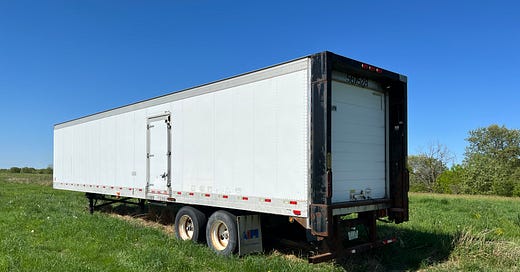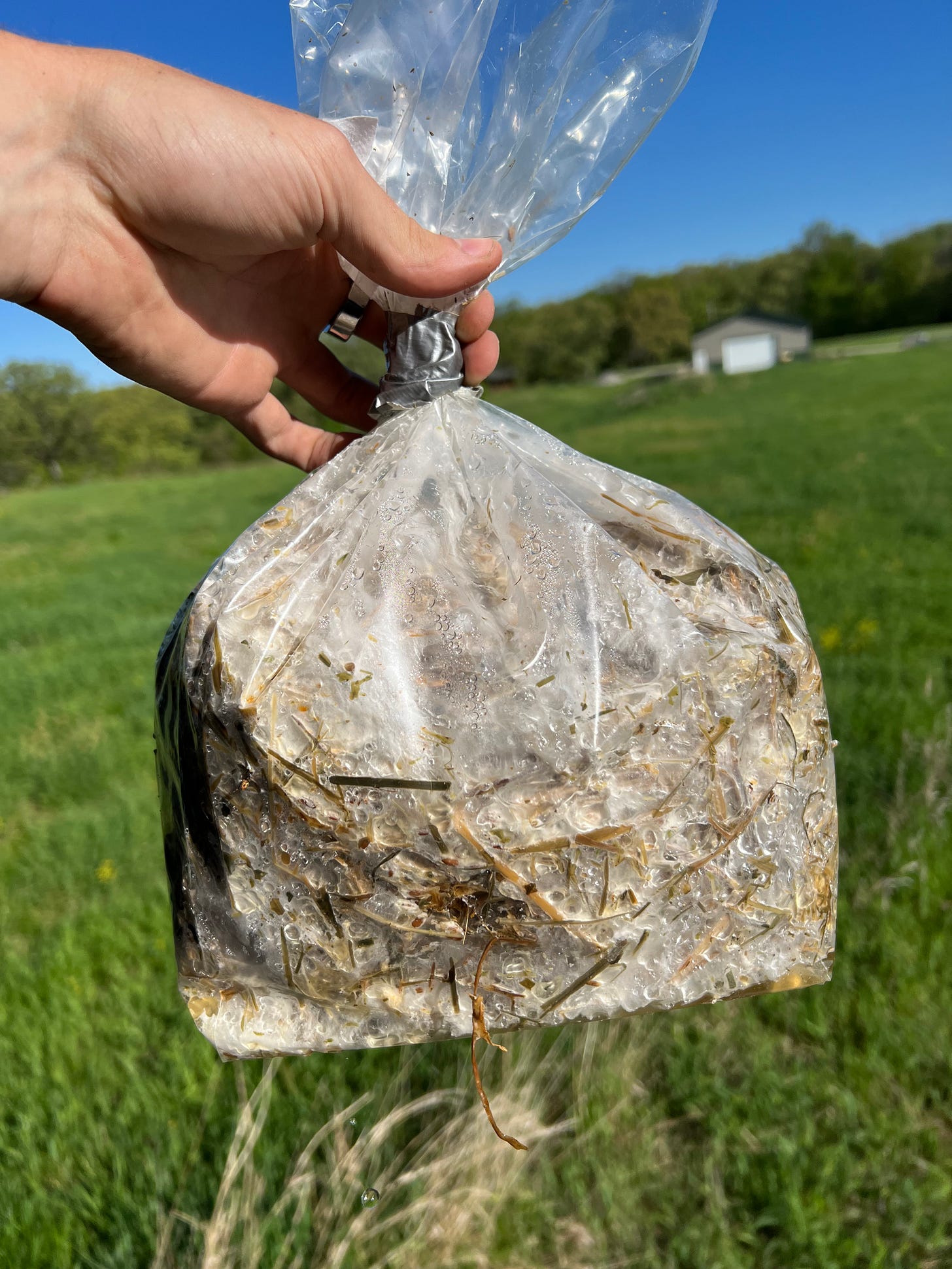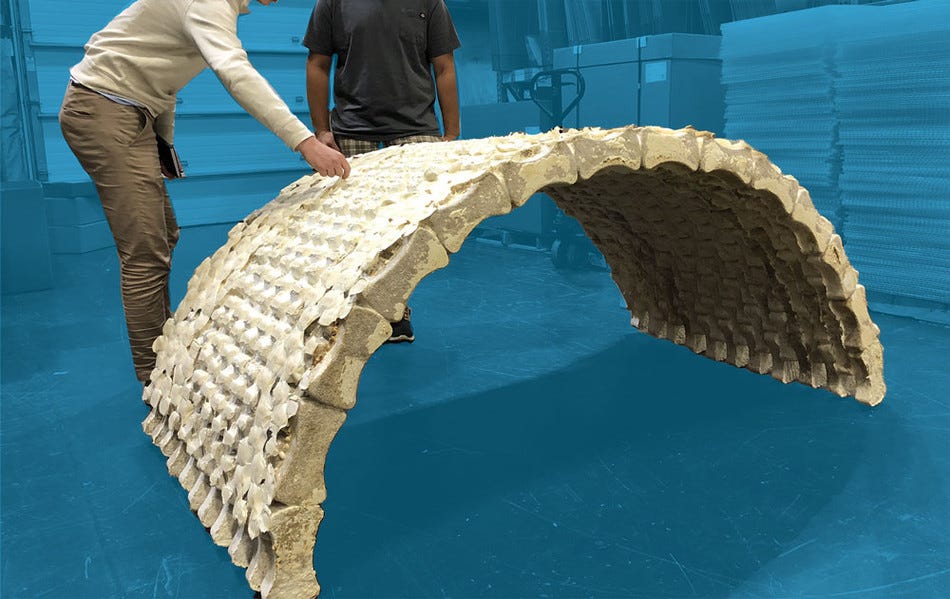Hey there Fungi Friday fans,
We’ve got some exciting news!! Not only is it my birthday next Tuesday (no, that’s not the exciting news), but we should only be about one week out from our first mushrooms fruiting. Fingers crossed!!
A few mushroom related updates. Last weekend we spent a couple days down in the lab (the nice, white trailer you see above) moving 15 of our 20 fully incubated bags from total darkness into the fruiting room. From there, they are now sitting in a ~90% humid, 12 hours on / 12 hours off light up room. Assuming all conditions are right (mainly assuming our solar is still functioning well enough), we should only be about one week out. Outside of a few power struggles due to the lack of sun here in the midwest, everything so far going according to plan. One more quick trip down to the farm tomorrow just to check on things and by Memorial Day weekend we might actually have some fully grown mushrooms to show you. For now though, here’s a picture of one of the fully incubated bags as a teaser before we get on to this weeks features:
Scientists may transform asteroids into soil using fungi
We touched on a story similar to this one a few weeks back, but figured we’d start this weeks feature with another space related story, as its not only super cool, but quite important for humanity’s quest to become a multi planetary species. While actually getting to different planets is one challenge, making them live-able is arguably even more important, and that’s where mushrooms come in. Mushrooms can turn rocks into soil, and soil is needed to sustainably reproduce food supplies. While this process does take years to play out, once it does, previously uninhabitable ecosystems of rock might just become live-able. Check out the article to read more!
The Magic of Building with Mushrooms
We haven’t circled back on the idea of using fungi and bacteria to develop synthetic building materials lately, so for our second feature of the week, why not cover that. One of the coolest parts about building with fungi? If a brick gets damaged, all it takes is a bit of new fungus packing in the crack and a few days of waiting until it fully mends itself. If you’re curious how these “bio-bricks” might be created, check out this article for a step by step process, its actually pretty fascinating (and super simple!).
These Mushrooms Can Help Our Ecosystem Survive in a Warming World! Read More About the Study Here
And for the final feature of the week, another sustainability focused article (I promise, I didn’t mean to do that, but sometimes those are the interesting articles that come across over a single week!)
The study covered in the article shows how fungi are able to keep the natural world productive and stable. Essentially, they do so by cleaning up the waste through their ability to decompose. The study showed that the more decomposers there are in an ecosystem, the more the rest of the ecosystems plants can grow productively. This is at least in part because fungi provide nutrients to the plants above them, making it so even in less ideal environments for normal plant growth, they can still receive the nutrients they need to thrive.
Want even more? Here are some other interesting, mushroom focused reads of the week:
As always, thank you for reading this weeks edition of Fungi Friday’s! If you enjoyed what you found, please feel free to forward to friends also interested in the Fungi Community!
Connect with me on Twitter @C2DaJMan
And if you were forwarded this post and enjoyed what you found, please subscribe below:






